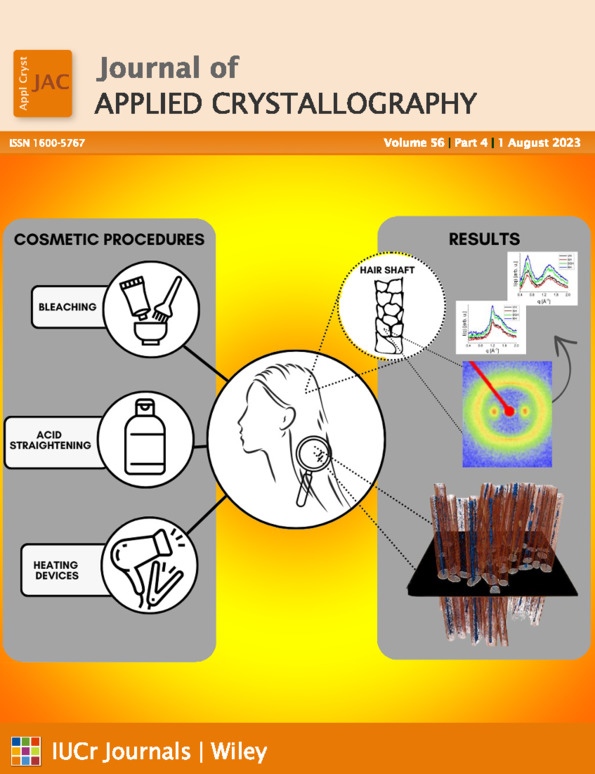Alterations promoted by acid straightening and/or bleaching in hair microstructures
Abstract
Human hair is a biopolymer constituted mainly of keratin intermediate filaments, lipids, pigments and water. Cosmetic treatments usually interact with the hair at the molecular level, inducing changes in its components and modifying the physicochemical and mechanical properties of the fibers. Here, the effect of acid straightening on the morphology and ultrastructure of Caucasian hair was investigated by a group of complementary experimental methods: wide-, small- and ultra-small-angle X-ray scattering; high-resolution 3D X-ray microscopy; quasi-elastic neutron scattering and inelastic neutron scattering; thermogravimetry–mass spectrometry; and differential scanning calorimetry (DSC). X-ray diffraction patterns showed that acid straightening associated with a flat iron (∼180°C) changed the cortex of the fiber, shown by denaturation of the intermediate filaments (measured by DSC). The increase in the spacing of the lipid layers and the observation of the dehydration behavior of the fiber provided indications that water may be confined between these layers, while neutron spectroscopy showed alterations in the vibration mode of the CH2 groups of the lipids and an increase of the proton (H+) mobility in the hair structure. The latter may be associated with the extremely low pH of the formulation (pH ≃ 1). Additionally, this investigation showed that bleached hair (one-time bleached) is more damaged by the action of acid straightening than virgin hair, which was shown by a threefold increase in the percentage of total porosity of the tresses. The obtained results demonstrate that the investigation approach proposed here can provide very important thermodynamic and structural information on induced changes of hair structure, and certainly can be applied for the evaluation of the action mode and efficiency of cosmetic treatments.




